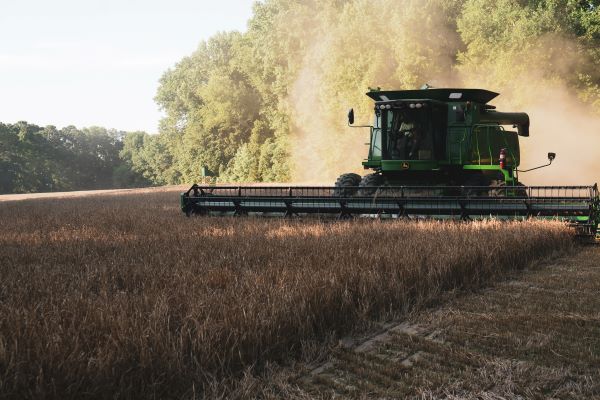Aside from water, malted grain is the most important ingredient in brewing. But increasingly, brewers don’t want malt to just give a beer its core taste — they want it to reflect a sense of place and community. In North Carolina and the Southeast, malthouses like Epiphany are teaming up with farmers and brewers to create a “Southern beer economy” with a focus on malted grain and those who farm it.
This culture-shift towards local ingredients is providing a new opportunity and revenue source for grain farmers. Small farms continue to change under growing financial pressure, namely from low profit margins and international competition. But North Carolina’s growing craft beer industry, which created a $2.6 billion economic impact in 2018 according to the Brewers Association, is teaming up with local farmers to grow fresh, local ingredients for their beers.
“It can’t be overstated how important it is,” Tim Kuhls, a farmer with family-owned Perry Farms, says. Perry Farms is located in Wake County, a populous area that includes Raleigh, the state capital. He grows malt-quality barley on the traditional tobacco farm, which his wife’s family has tended for over a century.
“To make it today, as a modern farm in Wake County, it’s not any one big thing that you do — it’s a lot of little things that add up. So if you can be 10% better every year, or find a way to grow 10%, that’s how you’re going to make it,” Kuhls says. “So while it’s just a small chunk of what we do, it’s going to be the difference for us.”
Epiphany Craft Malt, which buys grain from small farmers like Kuhls and processes it into brewing-ready ingredients, is a key part of this infrastructure that links farmers to craft breweries and consumers. Without malthouses, it would be difficult if not impossible for breweries to use local grain. Epiphany estimates that it keeps $1.8 million in the Southeastern economy and annually adds $442,000 in revenue to local farmers and the community. It also estimates that farmers who work with its maltsters utilize 1,200 acres of farmland for malting-quality grain. And Epiphany isn’t the only one — there are two other regional malthouses in the state.
“All of that money stays in the region,” Sebastian Wolfrum, the owner of Epiphany Craft Malt, says. “So the money that people spend stays at the brewery, in the community, and with the farmers.”
Although malting barley is harder to grow than feed barley, it is more cost effective and has a greater return on investment. There is also a low barrier to entry for farmers in the Southeast, as much of their equipment and land is already well-suited to winter barley — a type of barley that also has the added benefit of being less susceptible to climate change than other varieties grown in the north.
“Whether we make it or not is how many little things we can put together to carry on,” Kuhls says. “It’s less for me and more for my three boys. If farming is something they want to do, it’ll be here for them.”

Share Post